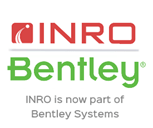Deployment of hydrogen fuel cell heavy vehicles
Dr Elnaz(Elli) Irannezhad & Dickson Leow
ARRB, Queensland
This presentation was delivered at the 2021 Online Conference Series and until October 2022 is only available to registered delegates and Content Access Pass holders via Interchange. For information on accessing this and other presentations please review the Content Access Pass options.
ABSTRACT
As the heavy-duty FCVs reach the market, the freight transport industry needs information on the benefits, challenges, risks, and the total cost of ownership (TCO). Currently, these decisions must be made with little long-term field history. FCVs lack significant historical operational, maintenance, and cost data that would typically support investment decisions. There exist a few unanswered questions and concerns regarding heavy-duty FCVs such as effective distance range, reliability (i.e. fuel stability, and fuel cell balancing), vehicle durability, turnover, degradation, lifecycle, maintenance, and insurance costs, maintenance knowledge, and lack of performance-based standards (PBS).
BEVs also exist as an option in competition with FCVs. However, BEVs have limits including a lower distance range travelled and much higher recharging time, excessive size and weight of the battery (reducing payload efficiency), and a higher material footprint due to the use of lithium batteries. The estimations indicate that the refuelling time of a heavy-duty FCV is about 3-8 and 10-20 minutes for regional delivery and long-haul trips, respectively (U.S. Department of Energy, 2018). While recharging time for the same size BEV is estimated to be 8 hours which requires idling the truck and allocating a designated charging area (European Federation for Transport and Environment, 2020). Estimations also show that the net additional weight of a battery-electric tractor-trailer type (approved in the EU) is typically around 1,216 kg, due to the weight of the battery pack, electric engine, inverter and gearbox (Sharpe, 2019). Accordingly, FCV is a preferred option for long-range heavy-duty vehicles (Australian Trucking Association, 2020; Roads Australia, 2019). Nevertheless, the debate between battery versus hydrogen misses the obvious solution of why not investing in both technologies.
This presentation aims to demonstrate the hydrogen opportunity for the heavy vehicle sector and to inform the gaps and industry concerns.
Author
Dr Elnaz(Elli) Irannezhad | ARRB
Elli Irannezhad has over 15 years of combined commercial and research experience in transportation engineering and planning sector. Elli started her career as a Road Design Engineer in an engineering consulting company in 2004 in Iran. After receiving her Master in Transportation Engineering in 2008, she worked as a Traffic Engineer and then Senior Transport Modeller in Tehran Traffic Control Company (TTCC – managed by Tehran City Council) to 2010. Then she became the Director of Simulation and GIS team of ITS Research Institute of Amirkabir University for two years. In 2012, she went back to TTCC and served as the Project Manager of multiple large-scale transportation projects for another two years. In April 2014, she started her PhD in Transportation Engineering at the University of Queensland.
After receiving her PhD, she acted as a postdoctoral research fellow at the UQ's Australian Institute of Business and Economics, funded by the Port of Brisbane and UQ partnership for three years (2017-2020). During her Postdoctoral research, she attracted and delivered three industry projects, commissioned by National Transport Commission (NTC), Department of Infrastructure Regional Development and Cities, and NSW Northern River Regional Government. In August 2020, Elli joined ARRB as a Principal Professional Engineer.
During her professional career, Elli has led various traffic and transport projects and has necessary skills in delivering large-scale engineering projects and has proven track records in traffic and transport modelling and planning.







